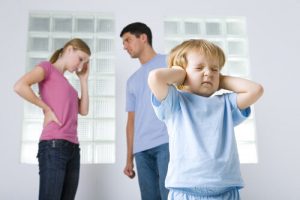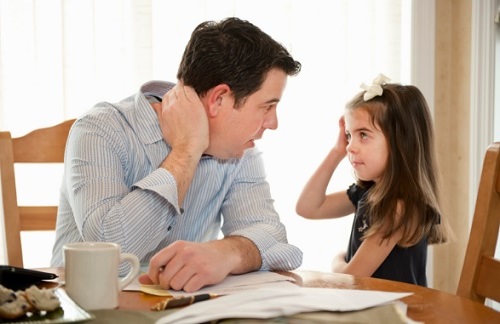How Children Survive Dysfunctional Families

Have you ever asked yourself what happens to children who are part of dysfunctional families? How do they survive and move forward? Here, we’ll tell you about these little ones’ realities.
Dysfunctional families are units in which one or several of its members don’t provide the standards of care, protection, and education that the rest of the people in the group need.
There can be multiple causes of dysfunction. These families typically lack the fundamental psychological resources necessary for coexistence to be possible, so their members encounter numerous obstacles to their emotional and psychological development.
Characteristics of dysfunctional families
The characteristics of dysfunction closely relate to the problems that cause it, and we can group them into the following:
- Excessive dependence. Family members create bonds of dependence that impede their personal development and limit their growth.
- A lack of sense of belonging. In families where members feel too emotionally disconnected, these members can develop a sense of loneliness and feelings of not belonging to the group.
- A lack of rules and limits. Power imbalances can develop inside the family unit, generating insecurities and relationships of dominance and submission.
- Reversed power hierarchies. Parents live at the will of their children, with the latter often becoming little tyrants.

- Serious problems with communication. Communication among members is poor, or even nonexistent. This absence of communication can cause problems for family members related to cohabitation and relating to other people.
- Roles and behavioral patterns that are too rigid. There is no room for negotiation or alternatives in the resolution of conflict. No matter the situation, the family must maintain the established rules.
- Lack of empathy. Difficulties arise for family members in being able to put themselves in others’ shoes and make sense of others’ emotions and feelings.
- High level of emotional manipulation. Feelings of guilt, humiliation, or blackmail occur constantly within these family contexts.
Consequences of dysfunctional families
When a child grows up in a dysfunctional family environment, he or she may end up adopting a specific role that helps them survive and cope with the situation.
The problem is that often, this role ends up extending beyond the family context and into other aspects of the child’s life.
The family is the first stage of socialization for any person. Everything you learn in the family environment will mark you for life.
Some of the most common roles for children within these contexts are:
- “Punching Bag.” The guilt that the child carries leads to this role. The child assumes they’ll always be on the receiving end of the “punches,” since he or she has always been blamed for family problems.
- “Rebel.” The child rejects authority as a result of the lack of a positive authority figure in their life.
- “Guardian.” These children have had to assume adult responsibilities from an early age. They’ve had to solve family problems or act as mediators in conflicts between their parents.
- “Tyrant.” These are children who have never been given rules or limits, and have always gotten exactly what they wanted. They usually have overprotective paternal figures, and as a result end up at the top of the family power hierarchy.
- “Invisible.” Excessively shy and quiet children. They haven’t been taken care of emotionally, leading them to repress their feelings since they believe they don’t deserve attention. They believe they aren’t worthy of being loved.

Resilience versus dysfunctional families
Resilience is the ability to overcome difficulties and adverse circumstances as they arise. This means working to conquer traumatic situations and achieve stable emotional and psychological development.
The capacity for resilience in children is enormous. They have the ability to face all kinds of adversity, even if the family itself doesn’t provide the necessary resources for it.
So, how do they do it? It’s enough that they find just one person to serve as a base of support.
If within the family there is at least one member who has a functional relationship with the child, he or she will take advantage of that link and build his or her personality by emulating that person’s most positive traits.
However, it isn’t necessary for this person to be within the family environment. At school or in the extended family environment, for instance, children can find an attachment figure to help them rework those acquired patterns of behavior that hinder their growth.
All cited sources were thoroughly reviewed by our team to ensure their quality, reliability, currency, and validity. The bibliography of this article was considered reliable and of academic or scientific accuracy.
- García, J. M. S. (1991). Psicología de la vida en familia: una visión estructural. Revista Médica, Instituto Mexicano del Seguro Social, 61-67. http://psiquiatria.facmed.unam.mx/docs/ism/unidad4.1.pdf
- Mendoza Sosa, A. (n.d.). Disfunción familiar. Las causas y efectos.
- Minuchin, S., Fishman, CH. (1979). The psychosomatic family in child psychiatry. Journal of Child Psychiatry, 1979; 18:76.
- Minuchin, S. (1999). Familias y terapia familiar. Barcelona: Editorial Gedisa.
- Sanders M. (2004). Una estrategia de intervención conductual familiar en niveles múltiples para la prevención y el tratamiento de los problemas de comportamiento infantiles. En Carvallo, V. E Manual de Psicología Clínica Infantil y del Adolescente Trastornos específicos .Madrid: Psicología Pirámide. (pp. 387 – 415)
This text is provided for informational purposes only and does not replace consultation with a professional. If in doubt, consult your specialist.
